Pleasant Point School

Early Education
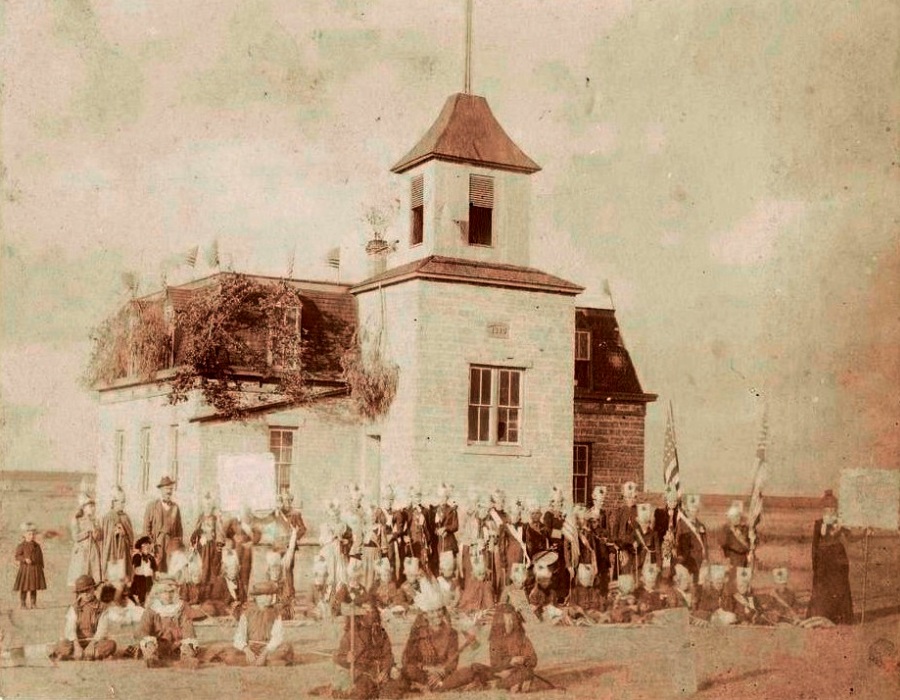 The first school building in Rush County was a log structure near the Walnut Creek northwest of
Alexander in 1873. The first public school district, District 1, was organized in Walnut City (Rush Center) in 1875, one year after organization of the county. The building was orginally a one-room
stone structure, constructed of native limestone quarried near the town. In 1880, the building was enlarged with two rooms on the main floor and a large room
on the upper floor.
The first school building in Rush County was a log structure near the Walnut Creek northwest of
Alexander in 1873. The first public school district, District 1, was organized in Walnut City (Rush Center) in 1875, one year after organization of the county. The building was orginally a one-room
stone structure, constructed of native limestone quarried near the town. In 1880, the building was enlarged with two rooms on the main floor and a large room
on the upper floor.
Over the next few years, school districts organized and constructed school buildings located about every five miles across the county so that a school was in walking distance of every home in the county. At one time, there were as many as 60-75 rural school districts in Rush County. Most of the rural buildings were modest one-room wood-frame structures. Some early buildings were made of sod. School buildings located in town were often more substantial two-story, multiple-room structures.
One-Room Schools
In 1905, the Kansas State Board of Education prescribed a standard “Kansas Course of Study” for public schools in rural areas of the state. There were 11 components: Reading, Language, Grammar, Spelling, Penmanship, Drawing, Arithmetic, Geography, Physiology, History (U.S. and Kansas), and Civil Government. To facilitate teaching, the state also adopted a series of state text books. The eight-year program specified monthly educational goals that students were expected to complete before advancing to the next level. The one-room school approach offered students advantages and disadvantages to reaching these goals. Since teachers were required to cover all eight grades, it was necessary for some students to study on their own while the teacher lectured to other grade levels. However, former students have indicated that since they had opportunity to overhear work going on in the upper grades, they felt better prepared once they reached those grade levels. At the same time, overhearing discussions in the lower grades provided an opportunity for review.
At the time, rural High School programs were limited or non-existent. If rural students wanted to advance their education beyond the eighth grade, they needed to travel to a community that had a high school. In 1905, the Kansas Board of Education also established a suggested four-year course of study for High Schools to provide a more uniform curriculum. The first year course of study included English, Latin, Bookkeeping and Business Methods, Algebra, and Botany. Second year included English, Latin, Plane Geometry, and Ancient History. Third year curriculum included English, Latin, Solid Geometry, Algebra, Midieval and Modern History, and English History. The fourth year included Physics, American History, Review of Common School Branches, Economics, Psychology, or Chemistry. Other courses of study included Manual Training, Agriculture, and German language. The “Kansas Course of Study” is available from the Kansas Government Information Online Library.
In 1907, the Hays Normal School (Now Fort Hays State University) developed a Model District School, the first in Kansas. Students were trained specifically to teach in a one-room school. In 1910, the school constructed a fully furnished one-room school on the college grounds. Area school districts could request a full set of plans and specifications along with a list of suggested furnishings. The detailed plans described placement of windows to maximize and balance ambient light and provide adequate ventilation. They also recommended paint colors, finish materials, and placement of furnishings to maximize efficiency. A number of rural districts in Ellis and surrounding counties followed the exact plans or adapted portions for their use.
At the peak, there were 75 school districts listed in Rush County. Enhanced from a 1926 district map, this map illustrates the various school districts in the county. Officially designated by their District Number, each school also sported its own unique name. Some were named after the area where they were located, others had a name that may have been chosen to invoke a specific mood. The attached document from the Historical Society Archives lists some of these names.
Rush County High Schools
By 1890, town schools began incorporating high school subjects into the curriculum. At first, classes at the high school level used the upper level of the schoolhouse. In 1910, the McCracken school district constructed a three level building next door to the existing school. The new building would be the first in Rush County to be dedicated to High School curriculum. Other communities followed and at one time there were seven high schools in the county.
School Name/Location |
Years Active |
Mascot |
School Colors |
Alexander High School |
1916-1966 |
Whippets |
Purple & Gold |
Bison Rural High School |
1920-1965 |
Buffalos |
Red & White |
La Crosse Rural High School |
1915-present |
Leopards |
Orange & Black |
McCracken High School |
1906-1986 |
Mustangs |
Blue & Gold |
Otis Rural High School |
1924-1965 |
Eagles |
Gray & Crimson |
Otis-Bison High School |
1965-present |
Cougars |
Blue & Orange |
Rush Center High School |
1910-1918 |
(unknown) |
(unknown) |
Early Consolidated Schools
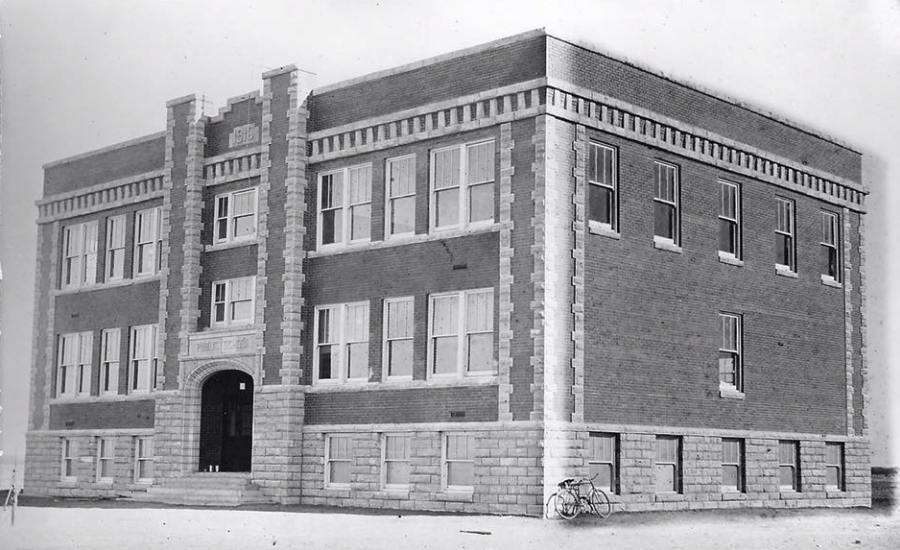 In 1916, the first consolidated public school in Rush County came to be with construction of the Alexander Consolidated school (pictured to the right). Comprised of the
Alexander and surrounding districts the new school, a beautiful brick and limestone structure, housed eight elementary grades and a high school. An addition in 1930 housed a gymnasium with opera-style stadium seating, a large stage, and locker rooms. For a period of time, it was the largest gymnasium in the county.
In 1916, the first consolidated public school in Rush County came to be with construction of the Alexander Consolidated school (pictured to the right). Comprised of the
Alexander and surrounding districts the new school, a beautiful brick and limestone structure, housed eight elementary grades and a high school. An addition in 1930 housed a gymnasium with opera-style stadium seating, a large stage, and locker rooms. For a period of time, it was the largest gymnasium in the county.
In 1905, Howard Barnard opened a consolidated school four miles northeast of McCracken known as Entre Nous College. The school offered a number of firsts; hot lunches, buses known as kid-wagons, physical education, music, and more. Sadly, due to financial problems, the school closed after only eight years.
In June of 1920, after the Rush Center District 1 had ceased holding high school classes, the citizens of Center Township attempted to establish a High School district modeling their plan after the Alexander Consolidated School. Their plan was to issue a bond in the amount of $45,000 to construct a high school building near the site of the existing school on Walnut Street in Rush Center. The bond election failed and the high school was never constructed.
School Unification
Over the years, many of the Rush County's school districts consolidated due to decreasing numbers of students and increasing costs. Beginning in the 1950s, the State of Kansas made attempts to establish a statewide system of unification to reduce costs, improve efficiency, provide avenues for state funding to local schools and allow for a centralized system of oversight. The Unification Law of 1963 mandated that each county must come up with a plan by 1966 to significantly reduce the number of districts. George D. Keith, who had served as Principal of La Crosse High School from 1942 to 1962, became the State Director of School Unification to oversee this process. In 1965, consolidation had reduced the number of districts in Rush County to two. La Crosse USD 395 encompasses the western and central parts of the county and Otis-Bison USD 403 includes the eastern part of Rush County and a small portion of Barton County.
Parochial Schools
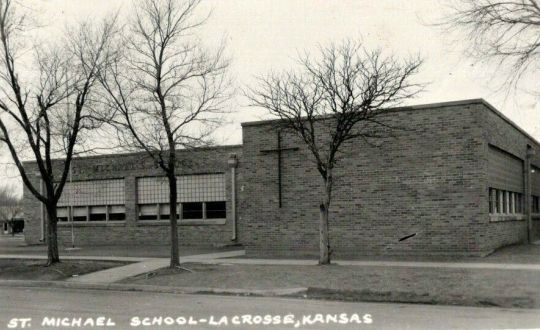
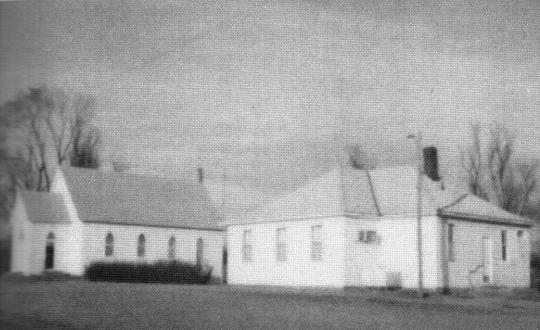
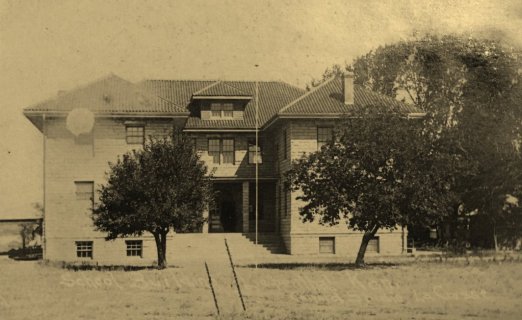
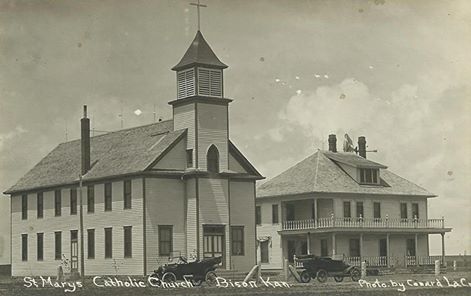 There were at least four parochial elementary schools in the county. St. Michael's School in La Crosse operated from 1944 until the late 1960s. After the parish moved the former Cordia church building to La Crosse to accomodate the growing congregation, they converted the original church
building into a school with the Dominican Sisters as teachers. In 1953, a fire completely destroyed the school and the parish constructed a new fire resistant brick building. In the late 1960s, the school closed and the parish leased the building to USD 395 to house the First and Second grades.
There were at least four parochial elementary schools in the county. St. Michael's School in La Crosse operated from 1944 until the late 1960s. After the parish moved the former Cordia church building to La Crosse to accomodate the growing congregation, they converted the original church
building into a school with the Dominican Sisters as teachers. In 1953, a fire completely destroyed the school and the parish constructed a new fire resistant brick building. In the late 1960s, the school closed and the parish leased the building to USD 395 to house the First and Second grades.
The Shaffer Seventh-day Adventist School was located in rural Rush County northwest of the town of Shaffer. The school opened in 1894 in the church building. Later, the congregation constructed a new larger chuch building and in 1908, constructed a building to house the school. The one-room school was eventually replaced with two-rooms and offered 10 grades of education. The school closed permanently in the mid-1980s. The church was later moved and the school dismantled. Today, nothing remains at the site.
St. Joseph Church in Liebenthal established their first school in 1890. Following the dedication of the present church building in May 1905, the original church was converted to a school operated by the Dominican Sisters. On June 4, 1917, the parish dedicated a three-story native stone school on the site of the original church. The building contained three classrooms and restrooms on the main floor, a gymnasium and stage on the upper floor, large hall and kitchen in the basement, and a wing to house the Sisters. After the parochial school closed, the school district used the building until 1968.
St. Mary's Help of Christians parish started a school in Loretto in 1914. A two-story building housed the school on the ground level and Mass was held on the upper level. In 1918, the Sister Adorers of the Precious Blood began teaching in the school. Fire destroyed the building in March 1948.